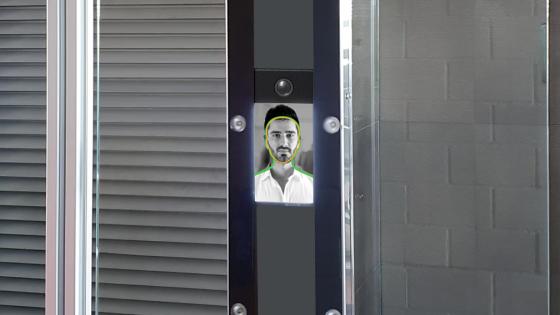Facial recognition technologies will soon facilitate automated airport journeys from your home to the gate. This paperless, contactless passenger experience is also known as the seamless or One ID concept. In an optimal situation, the face could be used to perform person and flight verification at each air travel touchpoint. Whether dropping off luggage, purchasing duty-free items, entering a lounge, passing through security and border control points, or boarding the flight – all these processes can be automated and accelerated via facial image comparison.
For vertiports, which will need even faster processing and more convenience at all the touchpoints mentioned above, the use of biometrics will ensure the highest level of security at the vertiport itself and during air travel. Vertiport businesses, along with the flight companies, can use facial recognition to confirm the traveller’s identity and status, curtail ID document fraud, and receive alerts for banned persons or known criminals. Alert configuration can also enable the recognition of frequent flyers to receive special treatment.
Video screening technology from Cognitec can serve home-to-gate and security processes at vertiports with industry-leading speed and accuracy. The technology recognises people’s faces in live video streams, instantly verifies a person’s identity against a reference image, and performs matches against databases. It can also extract and enrol a reference image directly from the video stream.

Its slim design makes the FaceVACS-Entry well-suited to smaller facilities
Vertiport applications would require travellers to enrol with a validated reference image. This step involves a reliable identity check, and could happen at a kiosk near the vertiport entrance or most likely at home before starting the trip.
Current solutions at airports store the reference data for a limited time, within proprietary technologies or separate programmes for the various port touchpoints, which require the traveller to perform the person verification at each station, with repeated readouts of passport or ID card data. The information is stored locally in each system without the possibility of data exchange. These scenarios require re-enrolment for each flight, each vertiport, each touchpoint – an impractical, stressful scenario for the frequent traveller.
Vertiport operators may not want to store and protect person-related data, even if it were deleted at the end of the day. In general, businesses try to minimise the risks of data breaches and other data management faults, but also the cost of purchasing and maintaining the equipment and system.
Ideally, travel and vertiport systems could connect at any time to a centralised or de-centralised ID data system. Such systems would guarantee the integrity and security of person-related data as needed for travel and border crossing processes.

Travellers would be required to enrol with a validated reference image
Alternatively, the live image is compared to the picture contained within the traveller’s digital wallet. This option would eliminate the need to connect to large external databases and to store the data temporarily in a local system.
In summary, current facial recognition technologies can guarantee the matching performance for one-ID applications at vertiports, airports and border checks, as long as both reference and live image adhere to minimal quality standards.
But seamless vertiport journeys using facial image identification are most dependent on a secure data system and authorised retrieval methods that provide person data on an as-needed basis, without having to enrol this data at the vertiport or with flight providers.
On-site ID checks
Some vertiports will choose to install eGates for a fast and highly accurate self-service identity check against a passport or ID card before the traveller boards the eVTOL.
Cognitec’s FaceVACS-Entry technology enables such a 1:1 comparison of a live image against facial images retrieved from ID documents or databases. The process also includes presentation attack detection to ensure a live person interacts with the device. At the same time, the device can also take a biometric photo for enrolment to frequent traveller databases or similar programmes.
The slim, light-weight device fits wide-ranging installation scenarios, including eGates, desks, kiosks, free-standing pillars, and border control booths. Instant camera positioning, active lighting, and responsive user guidance lead to optimal capturing conditions, accurate person authentication results, and fast processing times.
The device unites all the proven features Cognitec has thus far developed for border control applications, also equipping it for other identity management use cases. It includes Cognitec’s software for ISO compliance checks, with the company’s robust matching algorithm guaranteeing fast, accurate verification and identification results.
FaceVACS-Entry serves all applications that require the acquisition of standards-compliant photos, and the comparison of probe images against a live image or stored image data, such as access control, border control, and immigration programmes.
Facial recognition technologies are ready to support vertiport businesses in streamlining identification and security processes that enable people to travel in a safer, quicker and ever more convenient way. Their successful implementation will depend on all stakeholders working together on establishing standardised data handling and risk management, and on developing digital ID solutions that bring practical, realistic advantages to travellers and the travel industry.
